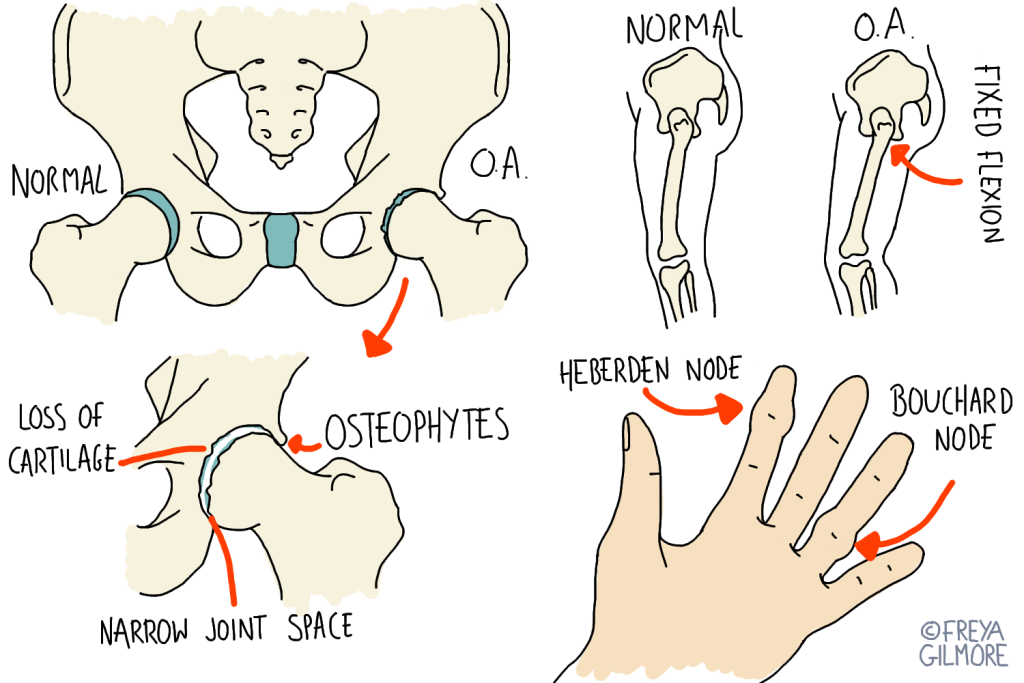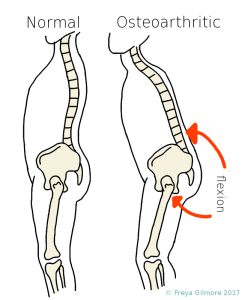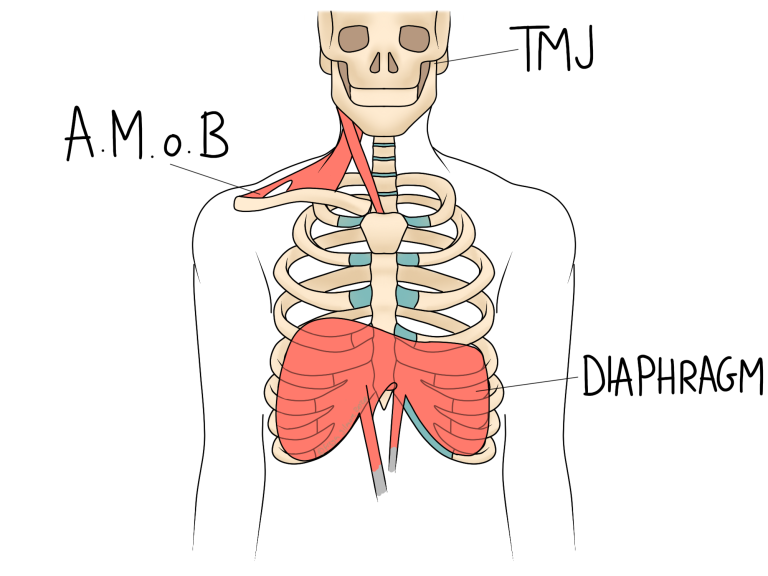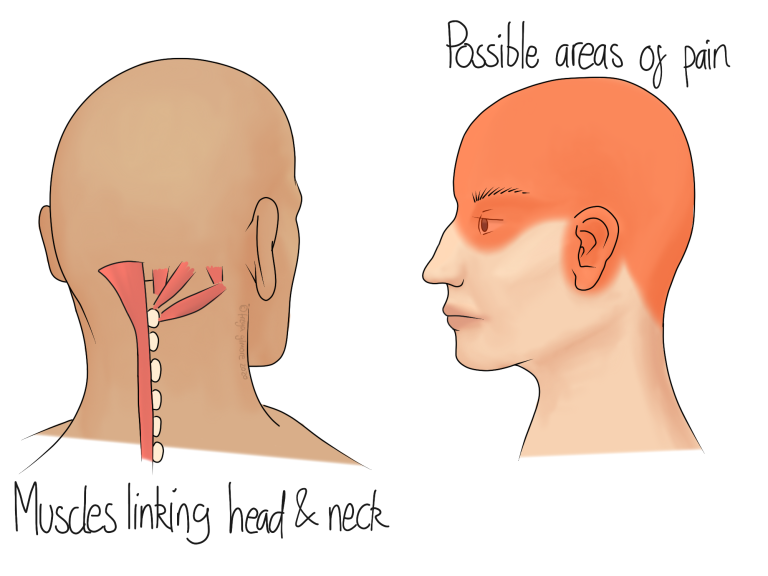The hip and knee are relatively commonly affected by osteoarthritis. Both joints might suffer from:
- Clicking or crunching
- Increased tension in surrounding muscles
- Local pain, or pain referring to the groin or elsewhere in the leg
- Joint stiffness

The Subtlety of Hip Osteoarthritis
Hip arthritis can have a body-wide impact, partially because it often goes undetected for a while in the earlier stages.

The body is very good at adapting to pain. If it can make small changes that keep you comfortable, it often will. Even if the price to pay is pain elsewhere, or later on. With hip osteoarthritis, the first movement lost is often extension: bringing your leg backwards. But you can move relatively normally (and comfortably) if you bend forward slightly. This gives the hip the illusion of more extension, by holding it in the opposite movement: flexion.
This change can be subtle enough that you don’t notice it, and it may be a friend or relative who points out that you’re holding yourself differently. The body does such a good job of making you comfortable, you can sail through the early phase of arthritis with no symptoms at all. But this causes more problems than it solves. By allowing you to go for some time without extending the hip, a portion of cartilage is left without compression, and another area is constantly compressed. Both areas are therefore at risk of further degeneration.
Further afield, the rest of the body is compensating. If only one hip was a problem initially, both are now held in this position, so the other hip is likely to be on its way to developing arthritis too. The lower back is held in a different position to normal, and the neck has to extend to stop you from looking at the floor. Muscles and joints in these areas are therefore working harder, or differently, and may develop their own aches and pains.
Knee Arthritis
Osteoarthritis in the knee is common too. Sometimes the joint between the knee cap and the rest of the knee is affected, or it might be the main knee joint itself. Sometimes the small joint where the fibula (a shin bone) meets the rest of the knee is involved too. In any case, the mechanism and treatment approaches will be similar.
When the knee cap is involved, you might find that walking downhill or downstairs is particularly uncomfortable. You may also feel a lot of tension in the quadriceps (muscles on the front of the thigh), as they pull directly on the knee cap. Typically, this area is very responsive to treatment, with most patients feeling the benefit by the end of the session. A combination of exercises, hot or cold therapy, and advice can help to keep this progress going.
Managing Osteoarthritis
Your osteopath will work to bring back some movement in the affected joint. This will help to encourage nutrient exchange in the cartilage itself, as well as reducing the needs for compensation elsewhere.
You can expect a combination of hands on treatment for the muscles and joints, combined with exercises to further support your progress.
Click here to make an appointment for your arthritis in Bristol


